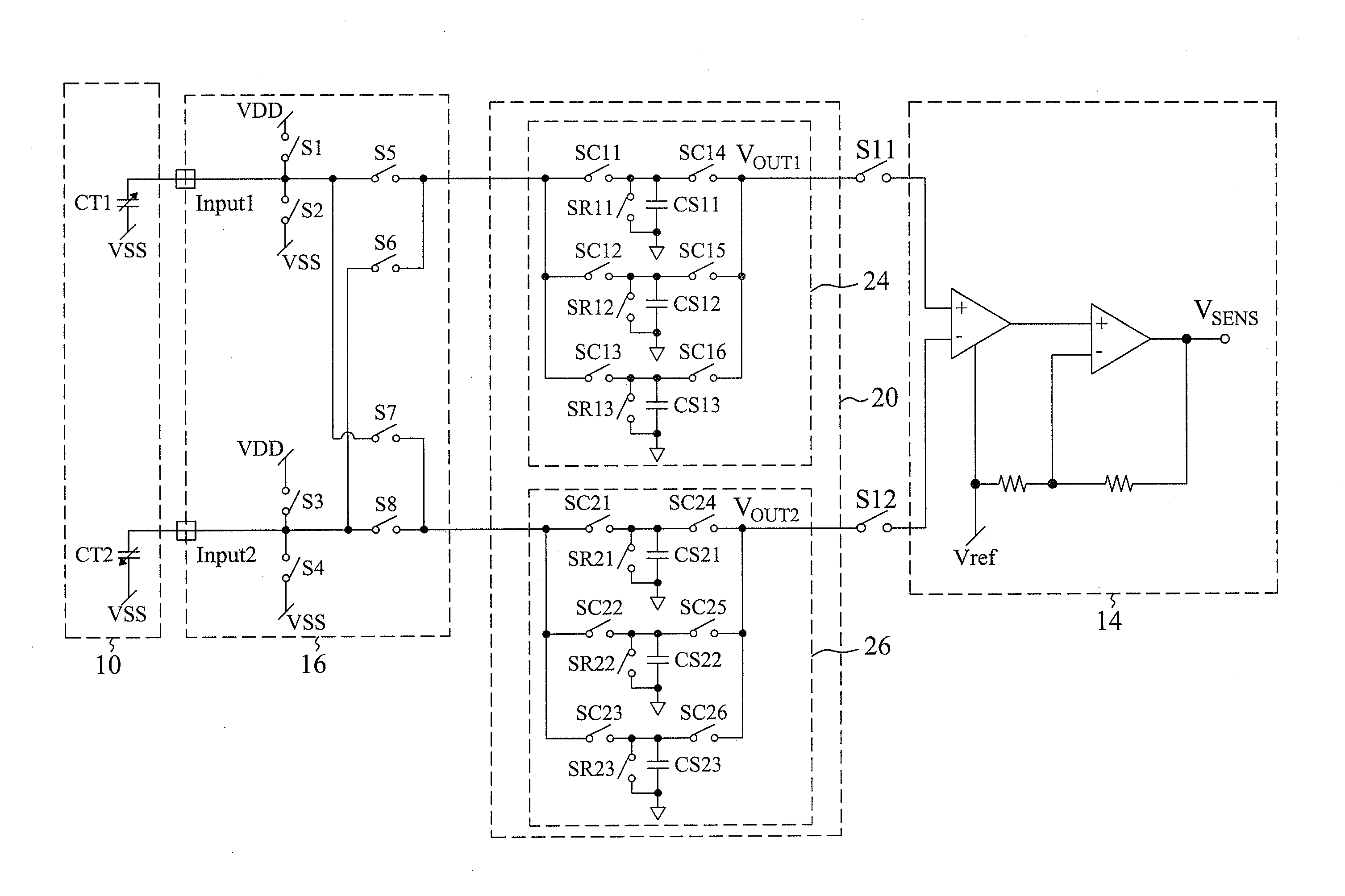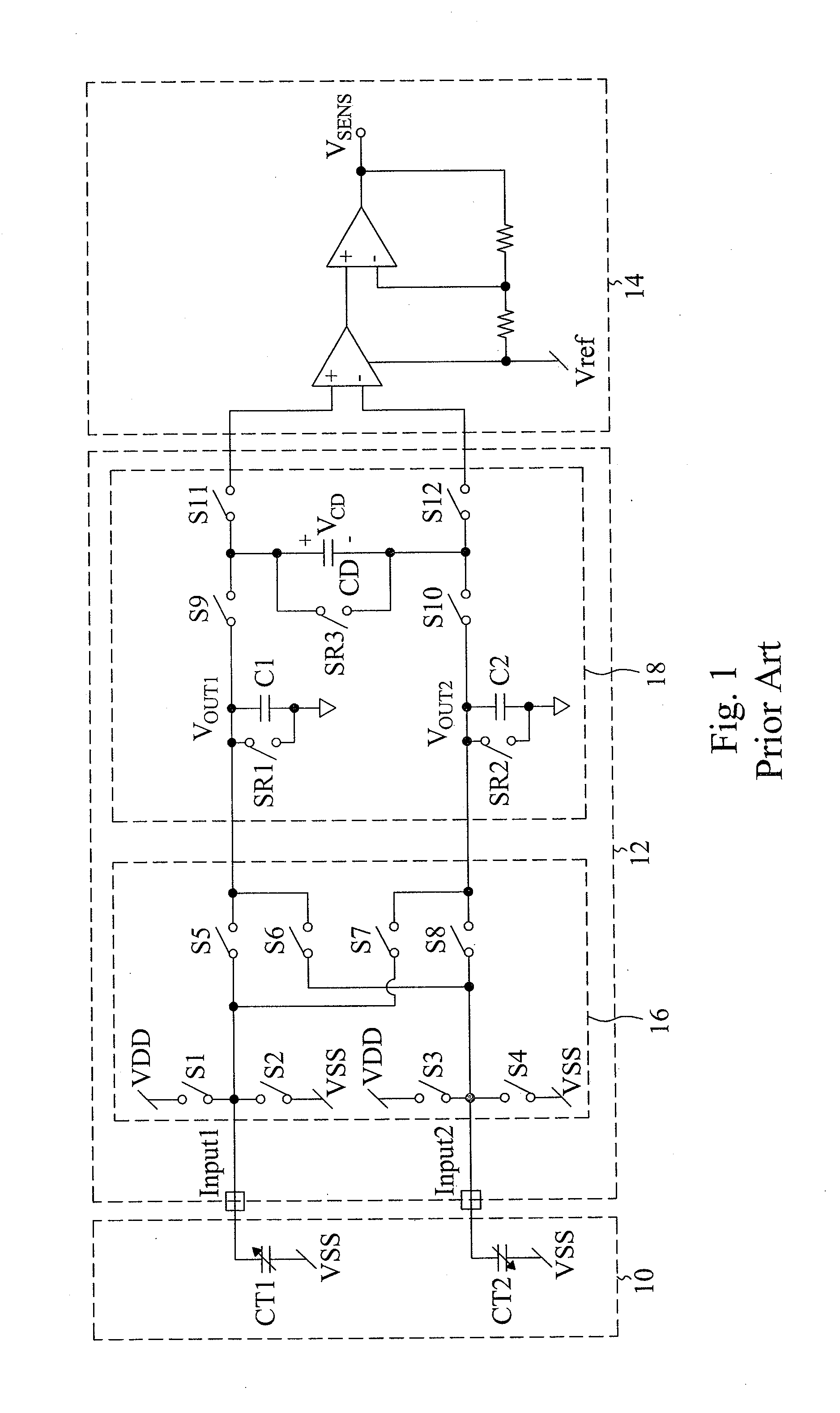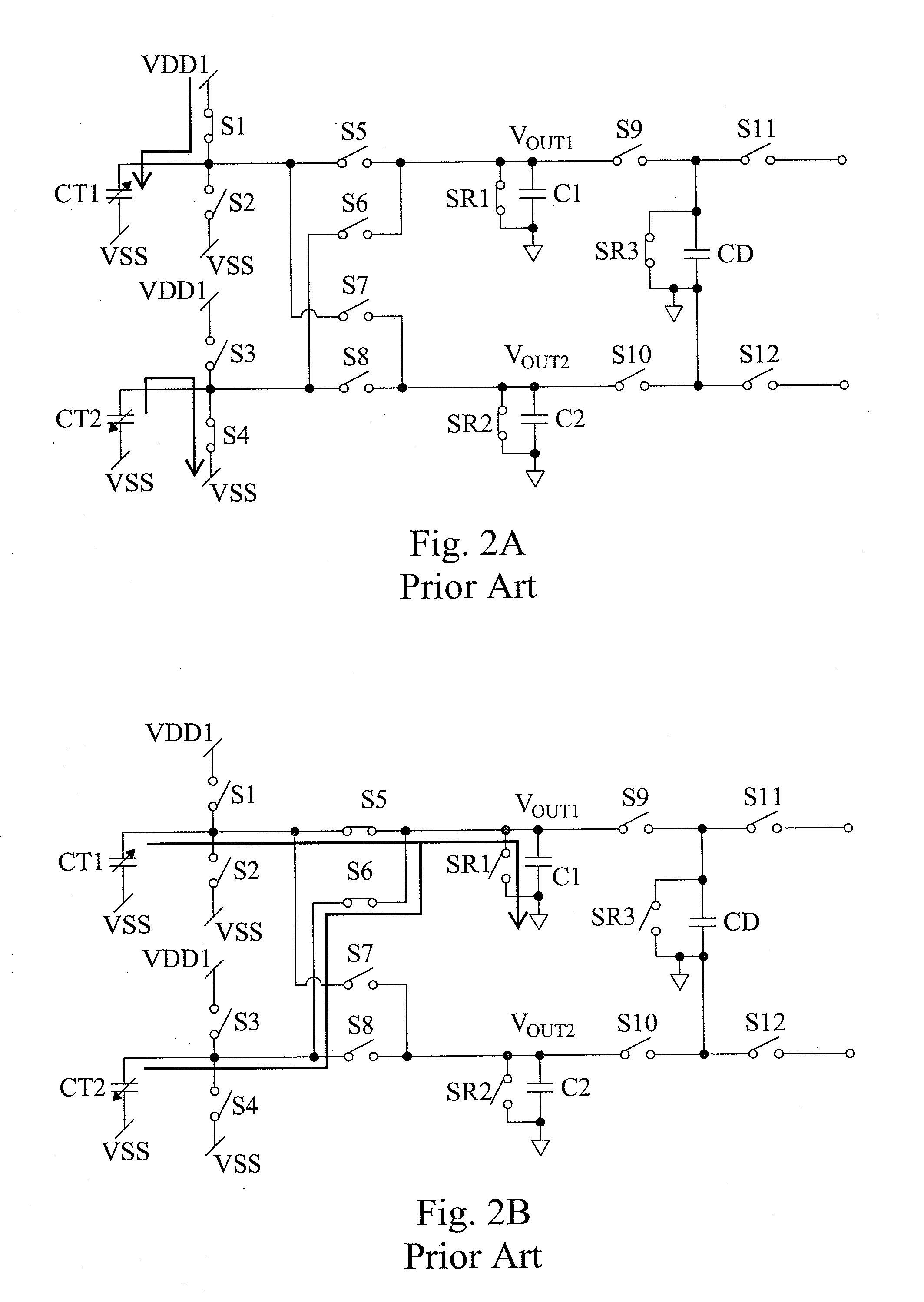Circuit and method for sensing a differential capacitance
a differential capacitance and circuit technology, applied in the direction of resistance/reactance/impedence, measurement devices, instruments, etc., can solve the problems of deteriorating sensing performance, over-sampling operation under this configuration fails to effectively average charges and reduce noise, and the effect of reducing source noise and interferen
- Summary
- Abstract
- Description
- Claims
- Application Information
AI Technical Summary
Benefits of technology
Problems solved by technology
Method used
Image
Examples
first embodiment
[0020]FIG. 3 is a circuit for sensing a differential capacitance according to the present invention. The circuit has a switching circuit 16, a charge-storing circuit 20 and an amplifier stage 22. The charge-storing circuit 20 includes a plurality of storing capacitors. During operation, it uses switches to make the charges sampled in each transfer round stored into a different storing capacitor, and then connects all the storing capacitors in parallel for outputting, so as to collect charge averages from both inputs and the noises. The switching circuit 16 is connected to capacitors CT1 and CT2 at sensing terminals Input1 and Input2, respectively. By switching switches S1-S8 in the switching circuit 16, the capacitors CT1 and CT2 are connected to a low-voltage source or a high-voltage source. Then the charges of the capacitors CT1 and CT2 are repeatedly transferred to the charge-storing circuit 20, as shown in FIGS. 2A-2D. For all the embodiments described herein, the power source V...
third embodiment
[0023]FIG. 6 is the circuit for sensing a differential capacitance according to the present invention. The circuit includes a switching circuit 16, a charge-storing circuit 30 and an amplifier stage 22. Similar to the embodiment of FIG. 3, the charge-storing circuit 30 also performs oversampling by using plural storing capacitors, but has three storing circuits 32, 34 and 36, wherein the principle of multiple storing capacitors is applied to the storing circuit 36 floated between the storing circuits 32 and 34. In this system, capacitors CS1 and CS2 in the storing circuits 32 and 34 sample capacitors CT1 and CT2, as shown in FIGS. 2A-2D. After the first transfer round, switches SCD1 and SCD2 are turned on, so as to store charges into the capacitor CD1. Then the capacitors CS1 and CS2 are reset, so that the charges similarly sampled in the second transfer round are stored into the capacitor CD2. Again, the capacitors CS1 and CS2 are reset to make the charges sampled in the third tran...
PUM
 Login to View More
Login to View More Abstract
Description
Claims
Application Information
 Login to View More
Login to View More - R&D
- Intellectual Property
- Life Sciences
- Materials
- Tech Scout
- Unparalleled Data Quality
- Higher Quality Content
- 60% Fewer Hallucinations
Browse by: Latest US Patents, China's latest patents, Technical Efficacy Thesaurus, Application Domain, Technology Topic, Popular Technical Reports.
© 2025 PatSnap. All rights reserved.Legal|Privacy policy|Modern Slavery Act Transparency Statement|Sitemap|About US| Contact US: help@patsnap.com



